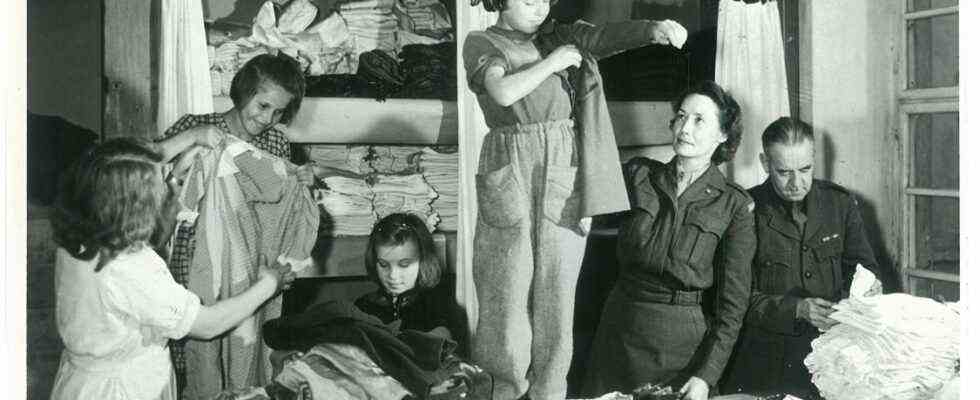The little woman stands inconspicuously in the crowd that gathers at the Sankt Vinzenz kindergarten in Indersdorf. Nevertheless, Zofia Oglaza is a sought-after conversation partner for many of the people who take part in the inauguration of the “Path of Remembrance” on Sunday. No wonder, because she is one of the children from Indersdorf who were taken in and looked after by a UN team in the monastery after the war. In 1945 the first reception camp for refugee children of the United Nations Emergency Relief and Reconstruction Administration (UNRRA) was set up in Markt Indersdorf, where over a thousand young people found refuge: survivors of concentration camps, children of forced laborers, orphans. They were all under the protection of humanitarian disaster relief, which gave them new confidence in the future.
Zofia Karpuk, as she was called by her maiden name, was born on November 20, 1935 in Pinsk in eastern Poland, which is now part of Belarus. At the age of nine she was abducted to Germany together with her four years younger brother Janusz, who unfortunately died recently at the age of 82, and her mother Janina. The siblings lived on a farm in Urfar near Malching in Lower Bavaria, where the mother worked hard as a slave laborer and the children had to do lighter jobs. In January 1945, the mother died of exhaustion, so that the now ten-year-old Zofia and her little brother Janusz were left alone in the hostile, foreign country. For the ten-year-old girl, it was also an extremely responsible task to look after the six-year-old boy.
Oglaza together with her brother Janusz on arrival at the Indersdorf monastery with the suitcase that is now in the museum.
(Photo: Toni Heigl)
After the liberation by the American army, the two Polish siblings were admitted to the Indersdorf monastery. Zofia Oglaza remembers that time “very, very well, only that mom was no longer there. After all, I was already ten years old,” she says in an interview, at which Bernadetta Czech-Sailer translates the under is also responsible for the partnership with the district of Oświęcim. You can still see the large corridors in the monastery, the dining room, in which there was always enough to eat, but also the courtyard, where people met and played with others.
In the moving documentary “The Children of Markt Indersdorf” by the French Théo Ivanez from 2018, Zofia and Janusz tell about their time in Indersdorf. Janusz says with a smile: “When I arrived at the monastery, I was always busy holding on to my sister’s skirt so that she wouldn’t run too far away.” Zofia enthusiastically remembers in the film that clothes were stacked on shelves. “And every child could choose what they wanted to wear.” There are also no fewer than 14 historical photos of the siblings that were taken by UNRRA. They show, among other things, how the two arrive with their suitcase, how they receive clothes or how they sit in the school desk.
Oglaza is one of the children from Indersdorf who was looked after by a UN team in 1945.
(Photo: Toni Heigl)
In 1946 the siblings were repatriated to Poland, where they grew up in orphanages. As a child, she always dreamed of coming to Indersdorf again, says Zofia Oglaza on Sunday in her short address on the fourth table of the “Path of Remembrance”. This is entitled “For a time in Indersdorfer” and also shows the fate of the Karpuk children. Thanks to the indefatigable historian Anna Andlauer, her dream has come true, she says happily. In 2009 she went back to the market town for the first time with her brother, who made it up to the Polish national handball player. Since then, the two have come several times, met with other former children from the monastery and shared their story as contemporary witnesses. After Janusz’s death, Zofia Oglaza is alone in Indersdorf for the first time this September. She no longer has any contact with other residents of the former international children’s center, says the 85-year-old. Her two best friends from that time have since passed away.
This time it is not just a visit to Indersdorf, because Anna Andlauer drove with Zofia to Urfar to the farm where her mother had to do forced labor during the war. Then she went to the cemetery in Rottalmünster for the first time, where her mother was buried. Finally she was able to visit the House of Bavarian History in Regensburg. The suitcase with which she and her brother Janusz arrived at the Indersdorf monastery in 1945 is now on display there.

